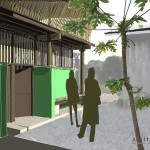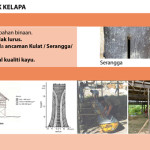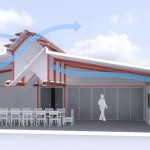The 3 pillars of Arkitrek
Text and Photos by Jamie Ross
Two months after applying for an Arkitrek internship I found myself on a plane to Borneo. Having little idea of what was in store other than words of warning about the dangers of rice wine I couldn’t help but feel a little apprehensive about the next 3 months. Fortunately these initial fears soonpassed as I was welcomed into the folds of the Arkitrek and Camps International family.
As with Eoghan and Olly before me, my home for the duration was to be Tinangol village and my objective to push forward the construction of the village kindergarten as far as possible in my 3 months.
Borneo is a place where the state of the environment and the issues which threaten it are in plain view everywhere you go, drive between any of the major towns and you will see palm oil plantations where once there stood rich and diverse primary rainforest and logging trucks delivering hardwoods to meet overseas demand. Large quarries cut away at hillsides supply the increasing demand for aggregates and stone from the construction industries.
On a local scale villages have no facilities for recycling and refuse disposal and use plastics and non-biodegradable material at a rapid rate. Local construction techniques are being lost as their value is no longer appreciated and solid construction techniques using copious amounts of steel and concrete are seen as desirable architecture.
This raises the question how can the small scale projects Arkitrek undertake respond to these environmental and cultural challenges and start to change attitudes?
Research & Development
Every project is a potential testing ground for new ideas and techniques, if it isn’t challenging the norm there is a missed opportunity somewhere. Arkitrek’s projects are in rural locations out of reach of external interference. This works on two levels, firstly it brings buildings to communities who really need them and the second, it allows the flexibility to make each building a research project. As the project list grows as does a valuable portfolio of research material for future projects and those projects of Artitrek’s partners. Be that a refined methodology on a new concrete mix or a photographic study of a process.
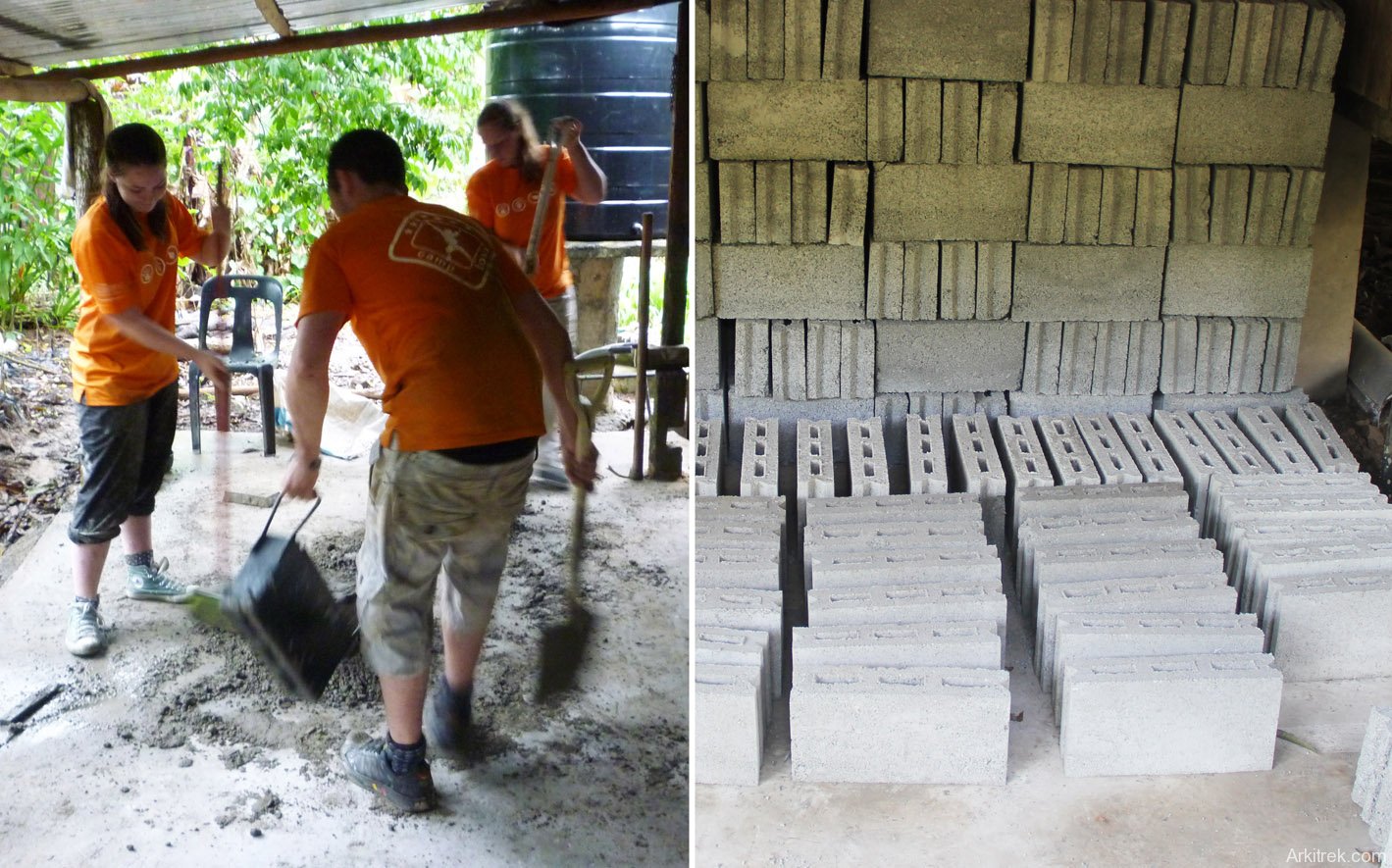
Image 1. Refining the mix for the perfect concrete block.
Leave only footprints
Construction waste is a global issue with some shocking statistics but the damaging results of this waste are safely hidden away in the UK, the closest most architects come to seeing it is skips leaving the building site. When working in a rural village there are no such luxuries and consequently significantly less waste so the last thing you want to do when constructing a building is leave behind piles of waste for the village to deal with. This forces an increased awareness of the materials used and levels of waste left behind. Every waste material can be put to use from the plastic bottles on Mantanani to natural waste to make Bio-crete in Tinangol. The irony of working on a creative project and picking materials off a shelf doesn’t exist in Sabah as it simply isn’t an option. You have to be creative and thrifty to source materials. A useful habit I hope not to forget when returning to work in Scotland.
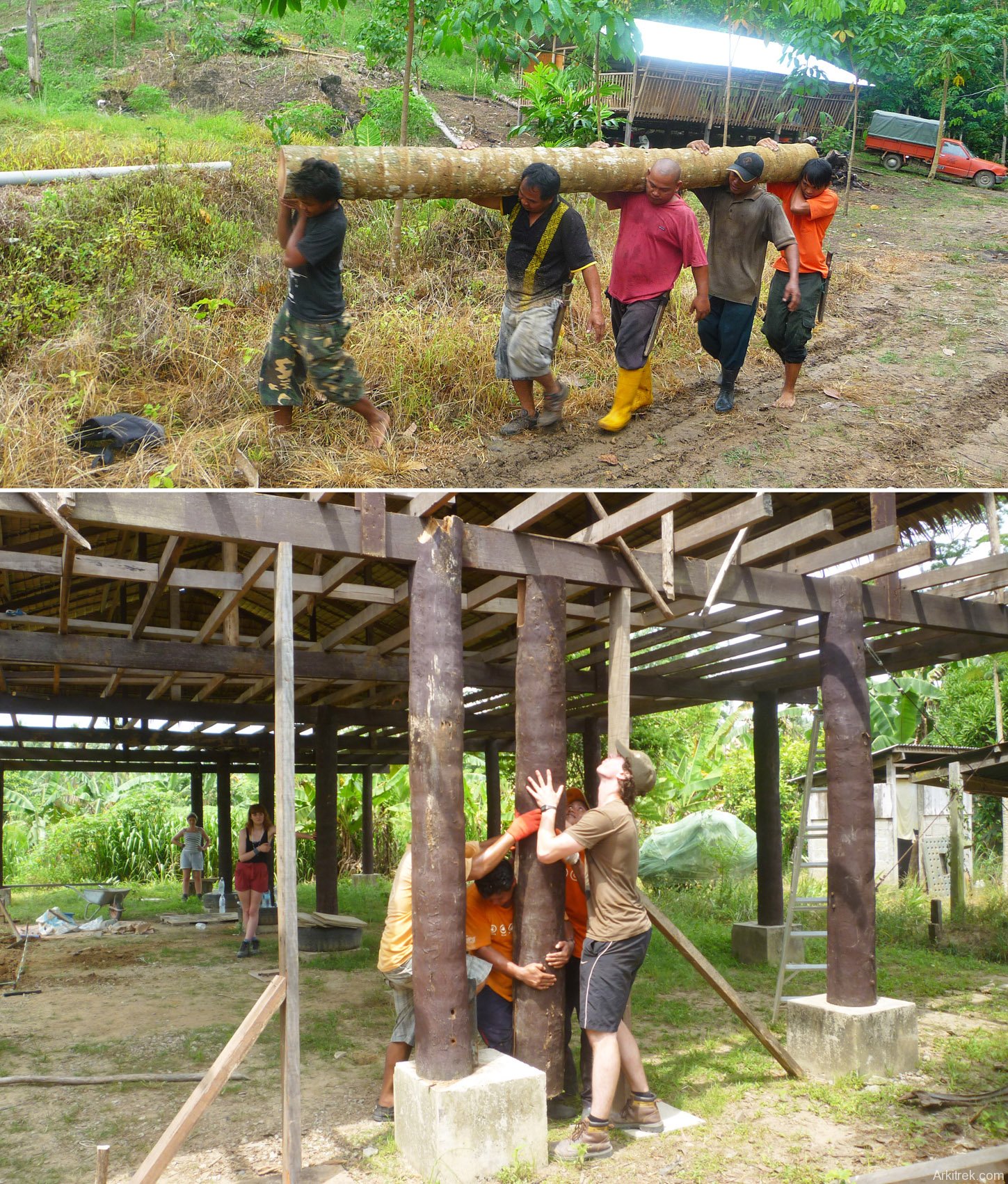
Image 2.Local sourcing Sabah style.
Into the cloud
Loved by many and scorned by the minority, the role of social media is certainly an interesting talking point. For me it is simply another tool which can be used to great effect or to present to the world a photo of your morning cup of coffee. The rural locations of Arkitrek’s projects create a need to promote the nature of the work. Connecting with professionals all over the world with similar ambitions and sharing ideas is currently done with a great deal more efficiency in other design disciplines. It is time for architecture to catch up. Arkitrek is gaining momentum and generating more and more followers, the value has clearly been recognised and with continued work the network has the potential to spread further afield.
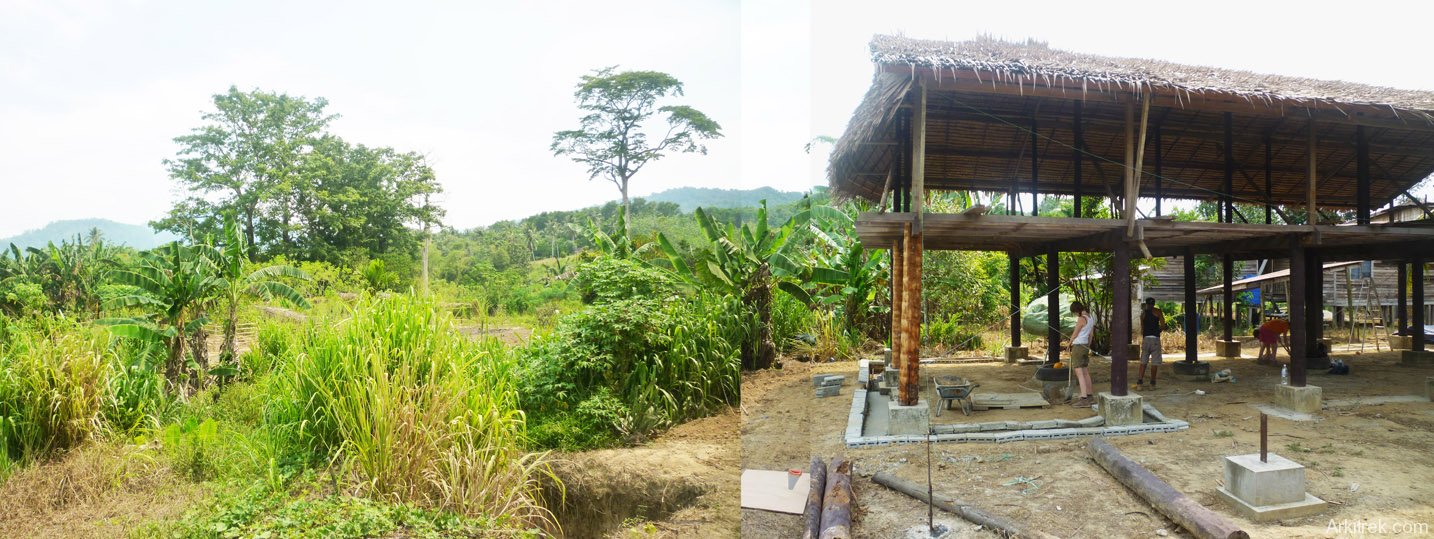
Image 3.Far cry from the west coast of Scotland in December.
What holds these three points together is the reminder that architecture is not an isolated discipline and each project does not end when it has been constructed. The importance in the body of work as a whole outweighs any individual project and the ability to develop and share a portfolio further with each consecutive project is fundamental to the growth of the ideas embodied in the work outside Malaysia and the UK.
Finally I would like to say a big thank you to Ian Hall and Arkitrek for these lessons and to Camps International for their continued support. Arkitrek is calling out for young architects and engineers to get involved, be that with the Arkitrek camp or with the intern programme. If your enthusiasm is waning after a few years of architecture I would suggest you get yourself out to Sabah.
View Jamie’s online portfolio



